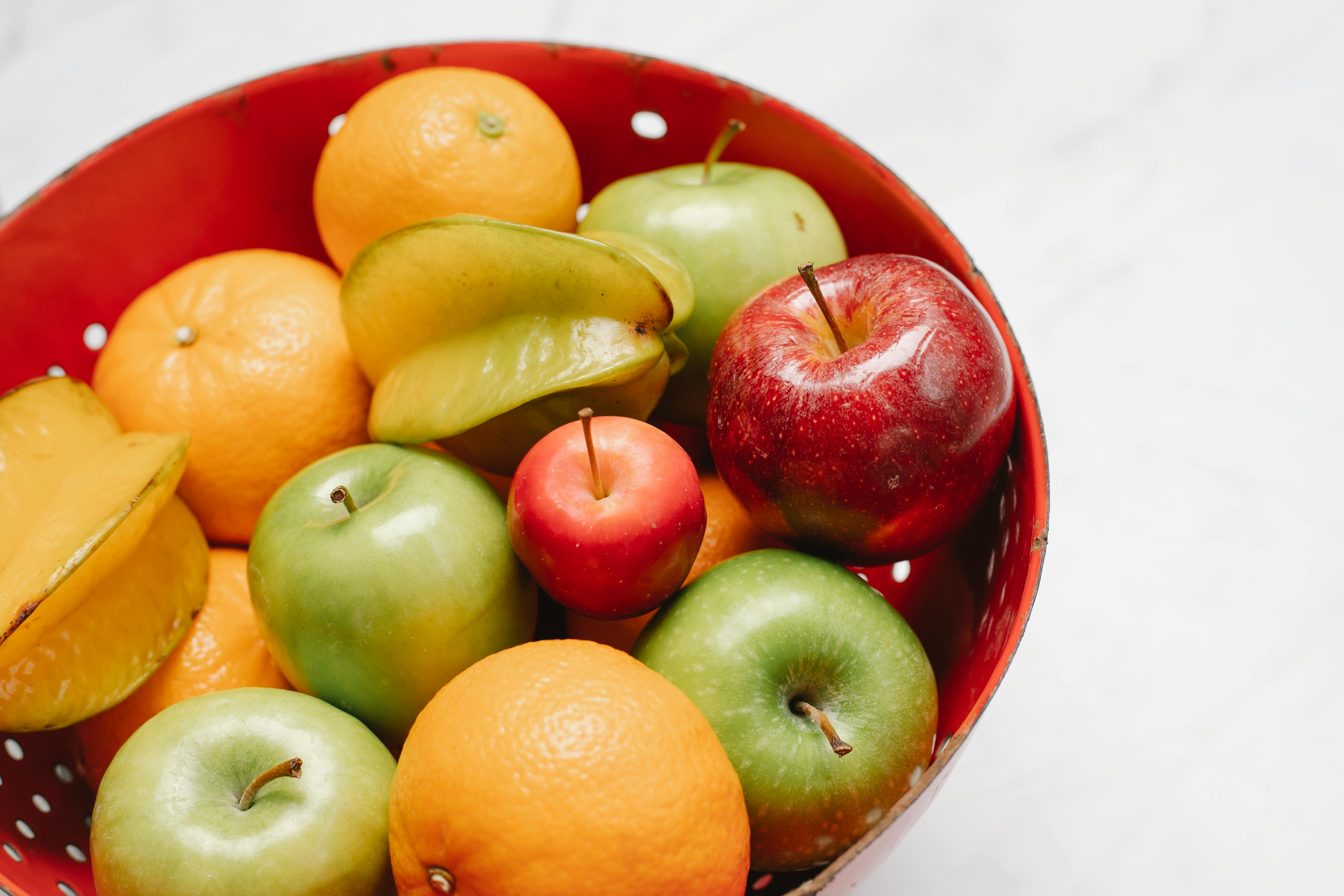Star fruit, or carambola, is a sweet and juicy fruit native to Southeast Asia. It has a unique star-shaped shape, hence the name. When ripe, star fruit is a beautiful yellow color and its flavor is quite sweet. However, it can be difficult to tell when it’s ripe as there are no obvious signs. In this article, we will provide you with some tips on how to tell when star fruit is ripe so that you can enjoy its delicious flavor to the fullest.Star fruit, also known as carambola, is a tropical fruit that is native to Southeast Asia. It is easily recognizable by its unique shape – when cut crosswise, it resembles a five-pointed star. Star fruit has a sweet and sour taste and can be eaten raw or cooked into various dishes. It is high in antioxidants, vitamin C, fiber, and other essential nutrients.
How Can You Tell if Star Fruit Is Ripe?
Star fruit, or carambola, is a sweet and juicy tropical fruit with a unique star shape. Knowing how to tell when star fruit is ripe can help you get the most out of this delicious treat. The ripeness of star fruit will depend on the variety, but there are some common signs that you can look for.
The first sign of ripeness is the color of the skin. Depending on the variety, star fruit can range from yellow-green to golden-orange in color when ripe. If you’re picking it from a tree, look for those that are more golden in color and have reached their peak sweetness.
Another indicator of ripeness is the texture. A ripe star fruit should have a smooth texture with some give when lightly squeezed. Avoid any fruits that feel hard or overly soft as they may not be at their peak flavor yet.
Finally, smell is another indication that your star fruit is ripe and ready to enjoy. A ripe carambola will have a sweet aroma with hints of citrus and melon. If you don’t smell anything sweet then it’s likely not ready to eat yet.
By looking for these signs, you should be able to tell whether or not your star fruit is ripe and ready to enjoy. Once picked or purchased, store them in the refrigerator to keep them fresh longer and enjoy within a few days for peak flavor and sweetness.
What Color Does Star Fruit Become When It’s Ripe?
Star fruit, or carambola, is an exotic tropical fruit native to Malaysia, India, and the Philippines. When the star fruit is unripe, it has a yellow-green color with slight brown spots. As the star fruit ripens, the yellow-green color deepens to a golden yellow hue. It will also become softer and juicier. The five ridges running along the length of the star fruit will also become more pronounced as it ripens.
When fully ripe, the star fruit can be a bit soft to the touch and can have a slightly sweet aroma. The entire surface of the star fruit should be a bright golden yellow with no green or brown spots remaining. At this point, it is ready to be eaten fresh or used in recipes such as salads, juices, smoothies and even desserts.
The flavor of ripe star fruit is quite unique and can be described as tart but sweet at the same time. Its texture is crunchy when raw but becomes softer when cooked or left to sit overnight in water or sugar syrup. The flavor of ripe star fruit can range from mild to intense depending on how ripe it is when picked from the tree.
Knowing when a star fruit is ripe can be tricky since there are no visible signs like there are with other fruits such as apples or oranges. One way to tell if the starfruit is ripe is by its color; when it’s ripe, it should have a bright golden yellow shade all over its surface with no green or brown spots remaining. Another way to tell if it’s ripe is by feeling its texture; if it’s soft to the touch and has a slightly sweet aroma then that means it’s ready for eating!
Are There Any Aromas When Star Fruit Is Ripe?
Star fruit, or carambola, is a tropical fruit that has a unique star-shape and a sweet-tangy flavor. The flesh of the star fruit is juicy, crunchy and slightly tart. It can be eaten fresh or cooked in various dishes. While unripe star fruits can taste somewhat sour, ripe ones have a more pleasant flavor. But what about their aroma?
When star fruits ripen, they do give off an aroma that is both sweet and tangy. Some people describe it as having notes of citrus and tropical fruit. The aroma only intensifies as the star fruit ripens further, becoming more intense and complex.
The aroma of ripe star fruit is especially noticeable when it’s cut open or chopped up before eating. If you’re looking for an extra burst of flavor, you can add some freshly chopped star fruit to salads, smoothies or other dishes to give them an extra kick of sweetness with a hint of citrus tanginess.
For those who enjoy cooking with star fruit, the ripe versions are best for adding to recipes since they lend more flavor than unripe ones do. Not only will they enhance the taste of your dishes but also add a wonderful aroma that will fill your kitchen with a pleasant scent!
Does the Texture of the Star Fruit Change When It’s Ripe?
The texture of a star fruit changes as it ripens, becoming softer and more succulent. A ripe star fruit will feel slightly squishy when lightly squeezed and will have a sweet aroma. When unripe, the fruit is firm and has a sharp, acidic odor. As it ripens, the texture becomes softer until it is almost jelly-like in consistency. The color also changes from green to yellow as it ripens, with darker yellow indicating a riper fruit.
The taste of a star fruit also changes when ripe. An unripe star fruit will have a tart flavor due to its high acidity levels, while a ripe one will be sweet and more palatable. The sweetness increases as the star fruit ripens and can even be slightly syrupy when fully ripe. In addition to changing in taste and texture, ripe star fruits can also have different nutritional values than unripe ones.
The acidity level of an unripe star fruit is higher than that of a ripe one, which means it contains more Vitamin C. Ripe star fruits contain more antioxidants than unripe ones because their sugar content increases as they ripen. While both types of the fruit are healthy for consumption, those who want to get the most out of their star fruits should opt for the riper option as it contains higher levels of vitamins and minerals that are beneficial to health.
Overall, it is clear that there are significant differences between an unripe and ripe star fruit in terms of texture, taste, and nutritional value. Unripe star fruits are firm with an acidic odor while ripe ones are soft with a sweet aroma. Taste-wise, an unripe one has a tart flavor while a ripe one has a sweet syrup-like flavor that increases its palatability. Lastly, an unripe one contains more Vitamin C while a ripe one contains more antioxidants that are beneficial to health

How Are Unripe and Ripe Star Fruits Different in Taste?
Star fruits, or carambola, are a tropical fruit native to Southeast Asia that have become increasingly popular in the United States. They have a unique star-like shape when cut across the middle and can be eaten fresh or used in jams, jellies, or juices. The taste of unripe and ripe star fruits differ significantly; unripe star fruits are tart and acidic while ripe star fruits are sweet with a slight citrus flavor.
Unripe star fruits have a sour taste due to their high levels of oxalic acid. This makes them difficult to eat raw but they can be used to make jams and jellies. Unripe star fruits also have a higher concentration of polyphenols which gives them their tart flavor. They also contain more fiber than ripe star fruit so they can be beneficial for digestion.
Ripe star fruit is much sweeter due to the presence of sugars like fructose and glucose. It has a mild citrusy flavor with hints of apple or pear depending on how ripe it is. Ripe star fruit has slightly lower amounts of oxalic acid which makes it easier to eat fresh compared to unripe ones. It also contains more vitamins and minerals than unripe ones including Vitamins A, C, E, K, folate, potassium, magnesium, calcium and iron.
Overall, unripe and ripe star fruits differ significantly in taste. Unripe ones are tart due to their high levels of oxalic acid while ripe ones are sweet with a slight citrus flavor due to the presence of sugars like fructose and glucose. Both types can be beneficial as they contain important vitamins and minerals but the taste preference will depend on each individual’s preference for sweetness or tartness.
What Happens If You Eat an Unripe Star Fruit?
Eating an unripe star fruit can have unpleasant effects on your health. The unripe star fruit is high in oxalic acid, which can cause stomach irritation and even kidney stones if consumed in large quantities. Star fruits contain a compound called psoralen, which can cause skin reactions and even photosensitivity when eaten raw. Eating unripe star fruits may also lead to digestive problems such as nausea, vomiting, and diarrhea. In addition, the taste of unripe star fruit is often sour and unpleasant.
It is best to wait until a star fruit has ripened before consuming it. Once the star fruit is ripe, its flavor will be sweet and pleasant, and its texture will be softer and more enjoyable to eat. The oxalic acid content of a ripe star fruit is much lower than that of an unripe one, making it safer for consumption. Additionally, any skin reactions or photosensitivity from psoralen will be greatly reduced once the star fruit has ripened.
If you do choose to eat an unripe star fruit, make sure you do so in moderation. It is not recommended to consume large amounts of unripe star fruits as they may cause serious health problems in some individuals. Be sure to consult with your doctor if you experience any adverse symptoms after eating an unripe star fruit.
What Are the Health Benefits of Eating a Ripe Star Fruit?
Star fruit, also known as carambola, is an exotic fruit with a star-shaped cross section when cut in half. It has a sweet and sour taste, making it a popular addition to many dishes. Star fruit is packed with essential vitamins and minerals that can benefit your health in many ways.
Star fruit contains significant amounts of vitamin C, which can help improve your immune system. Vitamin C helps fight off infections by stimulating the production of white blood cells. Eating star fruit also increases iron absorption in the body, which helps to prevent anemia and other iron deficiency illnesses.
The antioxidants present in star fruit can help protect your cells from damage caused by free radicals. This can reduce your risk of developing cancer and other diseases caused by oxidative stress. The high fiber content found in star fruit can also promote digestive health and help regulate blood sugar levels.
Star fruit is rich in potassium, which helps to keep your heart healthy and regulate blood pressure levels. The vitamin B6 found in star fruit can also help reduce inflammation throughout your body, while the folate content may reduce the risk for birth defects when consumed during pregnancy.
Overall, eating ripe star fruit can give you plenty of health benefits due to its impressive nutrient profile. It’s a delicious way to get more vitamins and minerals into your diet while providing protection from diseases like cancer and heart disease.

Conclusion
Star fruit is a delicious, tangy, and unique-tasting fruit that can be enjoyed in many different ways. To tell if a star fruit is ripe, look for one that has a yellow or light green color with no brown spots. Additionally, press gently on the skin of the star fruit and if it is ripe it should have some give. Moreover, smell the star fruit; if it smells sweet and fragrant then it is ripe and ready to be eaten. Lastly, a fully ripe star fruit will have a slightly crunchy texture when bitten into.
Overall, learning how to tell when star fruit is ripe is essential for enjoying this tasty treat in its prime!



